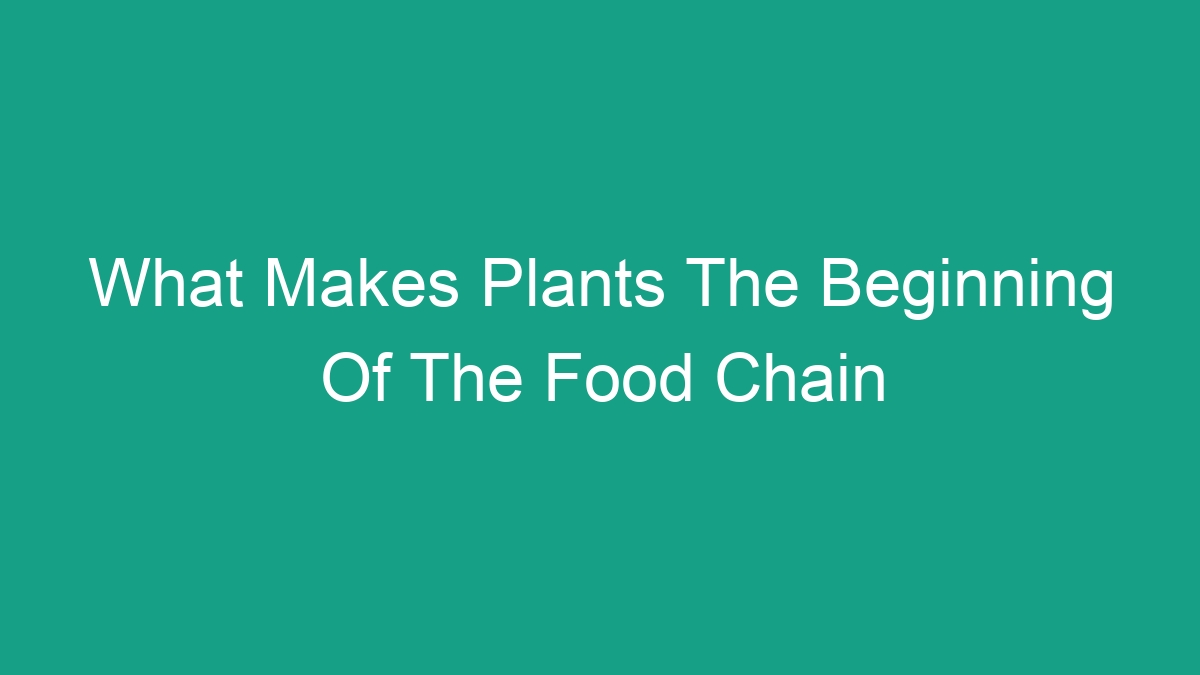
The Role of Plants in the Food Chain
Plants play a crucial role in the food chain as they are the primary producers of energy. Through the process of photosynthesis, plants convert sunlight, water, and carbon dioxide into glucose, a type of sugar that they use as food. This process not only sustains the plant itself but also provides the foundation for all other living organisms in the food chain.
Photosynthesis and Energy Production
Photosynthesis is the process by which plants use sunlight to convert carbon dioxide and water into glucose and oxygen. The chlorophyll in plant leaves absorbs sunlight and uses it to power the chemical reactions that produce glucose. This glucose serves as the primary source of energy for the plant, allowing it to grow, reproduce, and carry out essential functions.
In addition to providing energy for themselves, plants serve as the main source of energy for all other organisms in the food chain. When herbivores consume plant material, they obtain the energy stored in the form of glucose. This energy is then passed on to the animals that eat the herbivores, and so on up the food chain.
Plant-based Energy Flow
The energy flow in the food chain begins with plants as they convert sunlight energy into chemical energy in the form of glucose. This energy is then transferred to herbivores when they consume plant material. In turn, carnivores obtain energy by consuming herbivores, and so on. Each step in the food chain represents a transfer of energy from one organism to another.
The efficiency of this energy transfer varies, with some energy being lost as heat or during metabolic processes. However, plants remain the essential starting point for this energy flow, making them the beginning of the food chain.
Plant Diversity and the Food Web
In addition to providing energy, plants also contribute to the diversity of the food web. There are thousands of plant species, each with unique characteristics and nutritional properties. This diversity supports a wide range of herbivores, each with specific dietary needs and preferences.
Furthermore, the variety of plants available influences the abundance and distribution of herbivores, which in turn impacts the populations of carnivores that feed on them. Without a diverse array of plant species, the entire food web would be significantly altered, leading to potential imbalances in ecosystems.
The Importance of Plants as Nutrient Sources
Plants not only provide energy for organisms in the food chain but also serve as essential nutrient sources. They contain a variety of vitamins, minerals, and other compounds that are necessary for the growth and maintenance of all living organisms.
For example, leafy green vegetables provide essential nutrients such as vitamin A, vitamin K, and calcium, which are important for maintaining healthy bones, vision, and blood clotting. Without plants, many of these essential nutrients would be unavailable to herbivores and, consequently, to the animals that consume them.
Plant-Based Ecosystem Services
Plants also provide a wide range of ecosystem services that are crucial for the functioning of natural environments. These services include oxygen production, carbon sequestration, soil stabilization, and water filtration. Without these services, the entire food chain and the ecosystems that support it would collapse.
Oxygen production, for example, is a direct result of photosynthesis in plants. This process is essential for the respiration of all aerobic organisms, including animals and other plants. Carbon sequestration, on the other hand, helps regulate the Earth’s climate by removing carbon dioxide from the atmosphere and storing it in plant tissues and soil.
Conclusion
Plants are undeniably the beginning of the food chain, serving as the primary producers of energy and nutrients for all living organisms. Their role in photosynthesis is essential for the flow of energy through the food web, sustaining herbivores, carnivores, and other organisms. In addition, plants provide diverse nutrient sources and ecosystem services that are critical for the functioning of natural environments.
Without plants, the food chain would collapse, leading to the extinction of countless species and the disruption of entire ecosystems. As such, it is vital to recognize the importance of plants and to prioritize their conservation and sustainable management.
FAQs
Q: What happens if plants are removed from the food chain?
A: Without plants, herbivores would have no source of food and, consequently, carnivores would also suffer from a lack of prey. This disruption would lead to a collapse of the food chain and a significant impact on the entire ecosystem.
Q: How do plants contribute to ecosystem stability?
A: Plants provide ecosystem services such as soil stabilization, water filtration, and carbon sequestration, which help maintain environmental stability and support diverse habitats for other living organisms.
Q: Do all plants play an equal role in the food chain?
A: While all plants contribute to the food chain, some species may have a more significant impact due to their abundance, nutritional value, or specific ecological interactions. However, every plant plays a role in sustaining the overall balance of the ecosystem.



